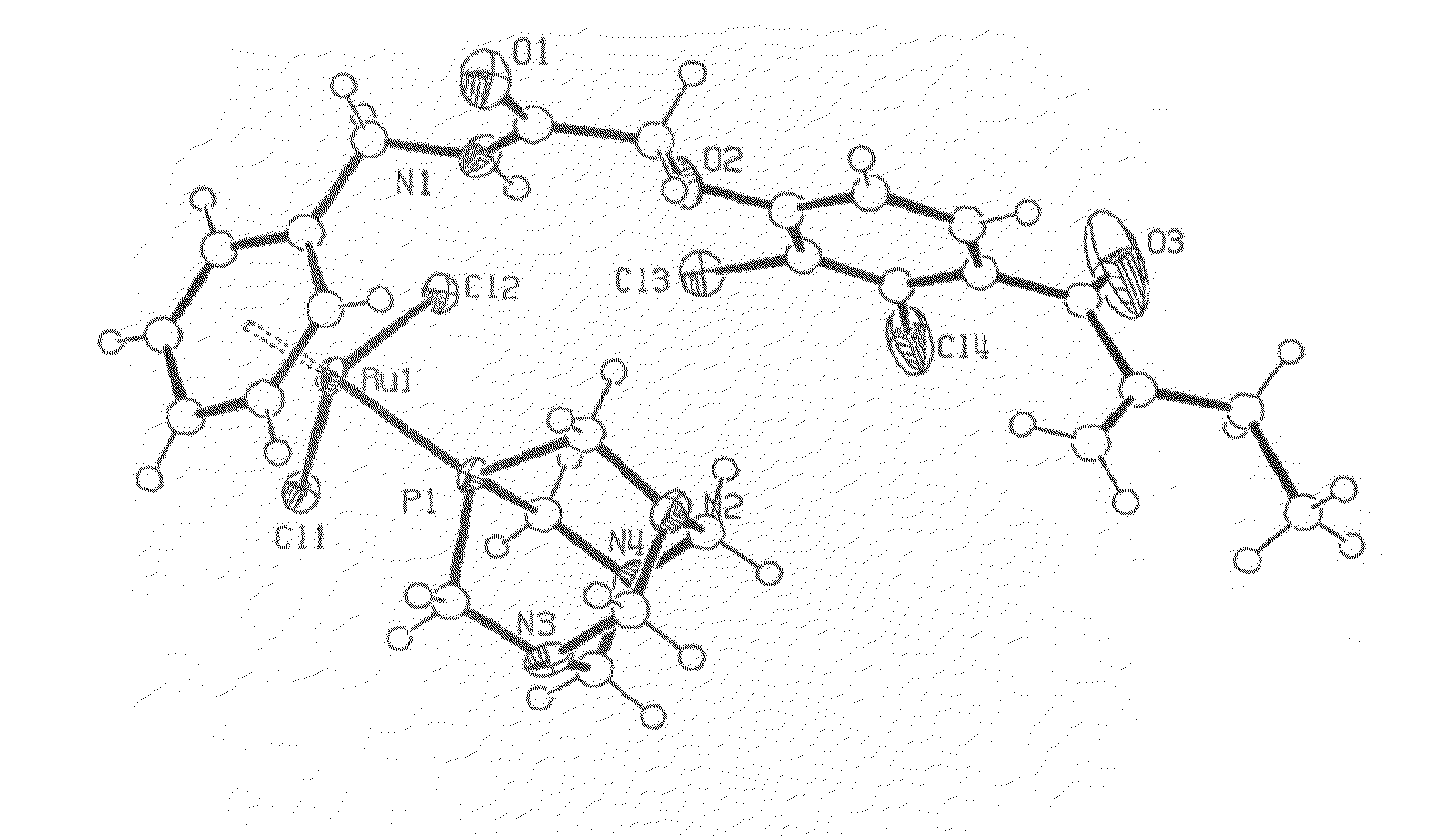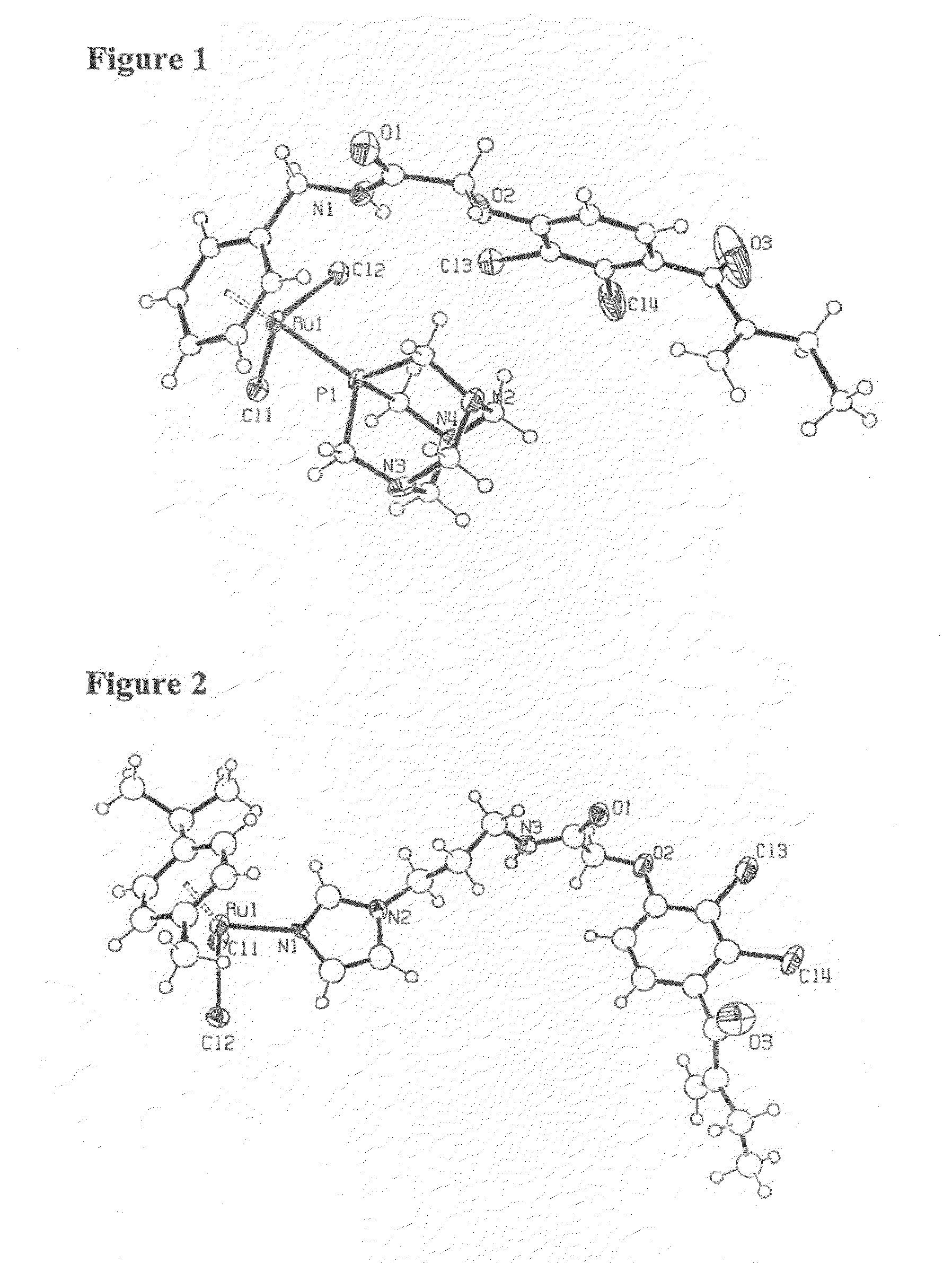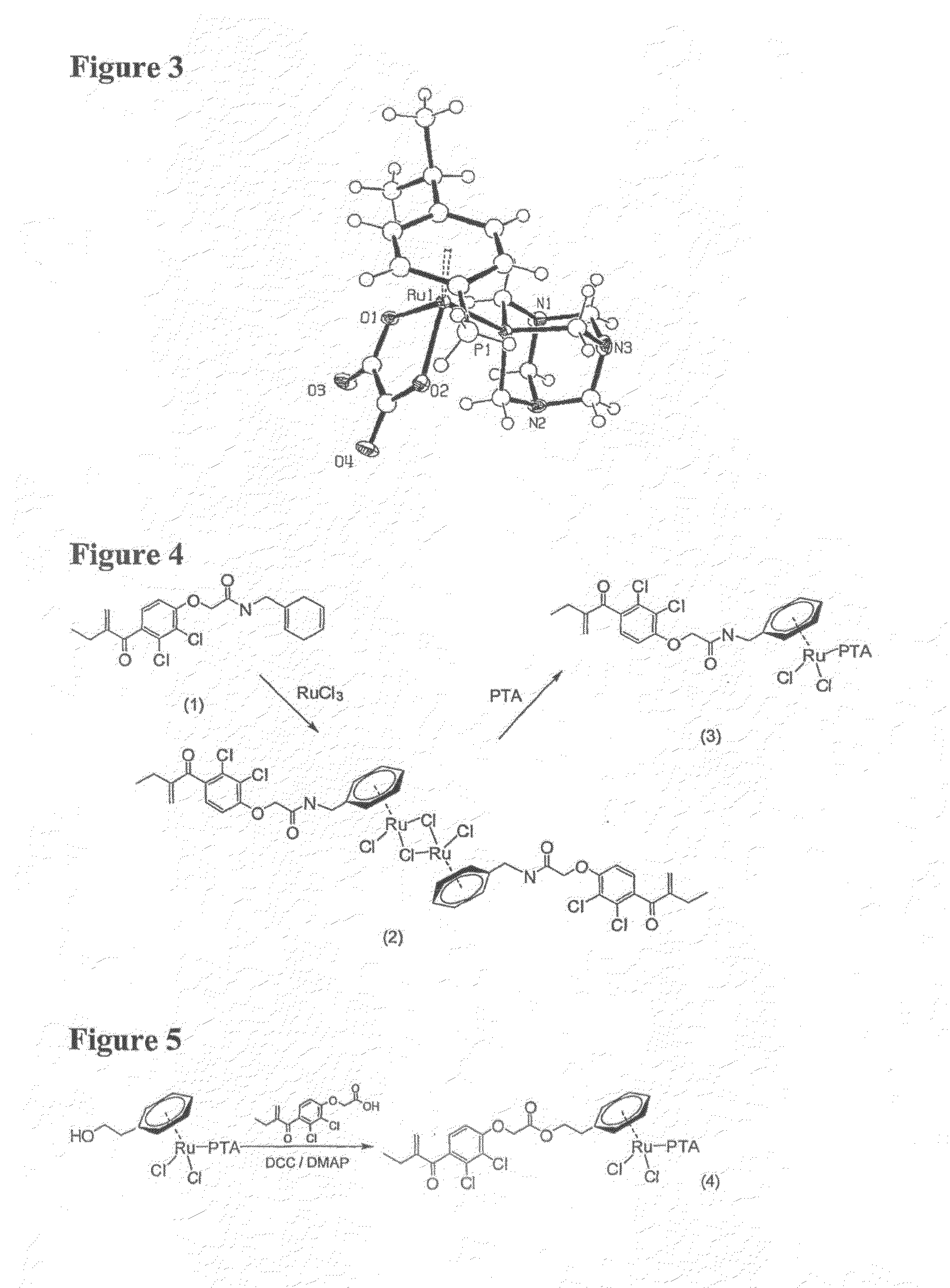Transition Metal Complexes for Inhibiting Resistance in the Treatment of Cancer and Metastasis
a technology of transition metal complexes and resistance inhibitors, which is applied in the direction of osmonium organic compounds, ruthenium organic compounds, drug compositions, etc., can solve the problems of low toxicity and low normal cell toxicity, and achieve high inhibition of resistance pathways, low toxicity, and high proliferation inhibition
- Summary
- Abstract
- Description
- Claims
- Application Information
AI Technical Summary
Benefits of technology
Problems solved by technology
Method used
Image
Examples
examples 1-5
A. Examples 1-5
Synthesis of the Organometallic Compounds of the Invention
example 1
Ethacrynic-(cyclohexa-1,4-dienyl)methylamide (1)
[0128]Ethacrynic acid (500 mg, 1.65 mmol) was refluxed in oxalyl chloride (5 ml) for 30 mins. Unreacted oxalyl chloride was removed in vacuo and dichloromethane (10 ml) was added to redissolve the residual colourless oil. (cyclohexa-1,4-dienyl)methamine (109 mg, 1.00 mmol) and triethylamine (1 ml) was added sequentially and the reaction mixture was refluxed for a further 6 h On completion, a dark brown solution was obtained. The reaction mixture was washed with 5% NaHCO3 (50 ml), brine (2×50 ml) and dried in vacuo. The residual oil was separated on silica using 5:95 MeOH:dichloromethane as the eluent to yield a colourless oil which crystallizes on standing (yield: 250 mg, 63.3%). 1H NMR (CDCl3, 400.13 MHz) 7.19 (d, 1H, ArEA-H, 3JHH=8.4 Hz), 6.87 (d, 1H, ArEA-H, 3JHH=8.4 Hz), 6.81 (b, 1H, —CH2NH—), 5.95 (s, 1H, ═CH2), 5.64-5.71 (m, 3H, C═CH—C), 5.58 (s, 1H, ═CH2), 4.60 (s, 2H, —OCH2CO2—), 3.91 (d, 2H, —CH2NH—, 3JHH=6.0 Hz), 2.83 (t, 2H,...
example 2
(Ethacrynic-η6:phenylethanoate)Ru(PTA)Cl2 (4)
[0131]Ethacrynic acid (200 mg, 0.66 mmol), N,N-dicyclohexylcarbodiimide (200 mg, 0.98 mmol), N,N-diethylaminopyridine (120 mg, 1.10 mmol) and (η6:phenylethanol)Ru(PTA)Cl2) (90 mg, 0.20 mmol) was dissolved in dichloromethane (50 ml) and stirred for 96 h. The reaction mixture was filtered through celite to remove the urea precipitate and separated on silica gel using acetone. The product was triturated in diethyl ether and recrystallised from dichloromethane / diethyl ether to yield a brown precipitate (yield: 50 mg, 34.0%). 1H NMR (CDCl3, 400.13 MHz) 7.07 (d, 1H, ArEA-H, 3JHH=8.4 Hz), 6.72 (d, 1H, ArEA-1H, 3JHH=8.4 Hz), 6.00 (s, 1H, ═CH2), 5.62 (s, 1H, ═CH2), 5.48 (m, 2H, m-ArPh-H), 5.22 (d, 2H, o-ArPh-H, 3JHH=5.6 Hz), 5.13 (t, 1H, p-ArPh-H. 3JHH=5.2 Hz), 4.81 (s, 2H, —OCH2CO2—), 4.55 (s, 6H, PTA-N—CH2—N), 4.50 (t, 2H, —CO2CH2CH2—, 3JHH=6.0 Hz), 4.33 (s, 6H, PTA-P—CH2N), 2.83 (t, 2H, —CO2CH2CH2, 3JHH=6.0 Hz), 2.47 (q, 2H, —CH2CH3, 3JHH=7.6 H...
PUM
| Property | Measurement | Unit |
|---|---|---|
| Molar density | aaaaa | aaaaa |
| Molar density | aaaaa | aaaaa |
| Molar density | aaaaa | aaaaa |
Abstract
Description
Claims
Application Information
 Login to View More
Login to View More - R&D
- Intellectual Property
- Life Sciences
- Materials
- Tech Scout
- Unparalleled Data Quality
- Higher Quality Content
- 60% Fewer Hallucinations
Browse by: Latest US Patents, China's latest patents, Technical Efficacy Thesaurus, Application Domain, Technology Topic, Popular Technical Reports.
© 2025 PatSnap. All rights reserved.Legal|Privacy policy|Modern Slavery Act Transparency Statement|Sitemap|About US| Contact US: help@patsnap.com



